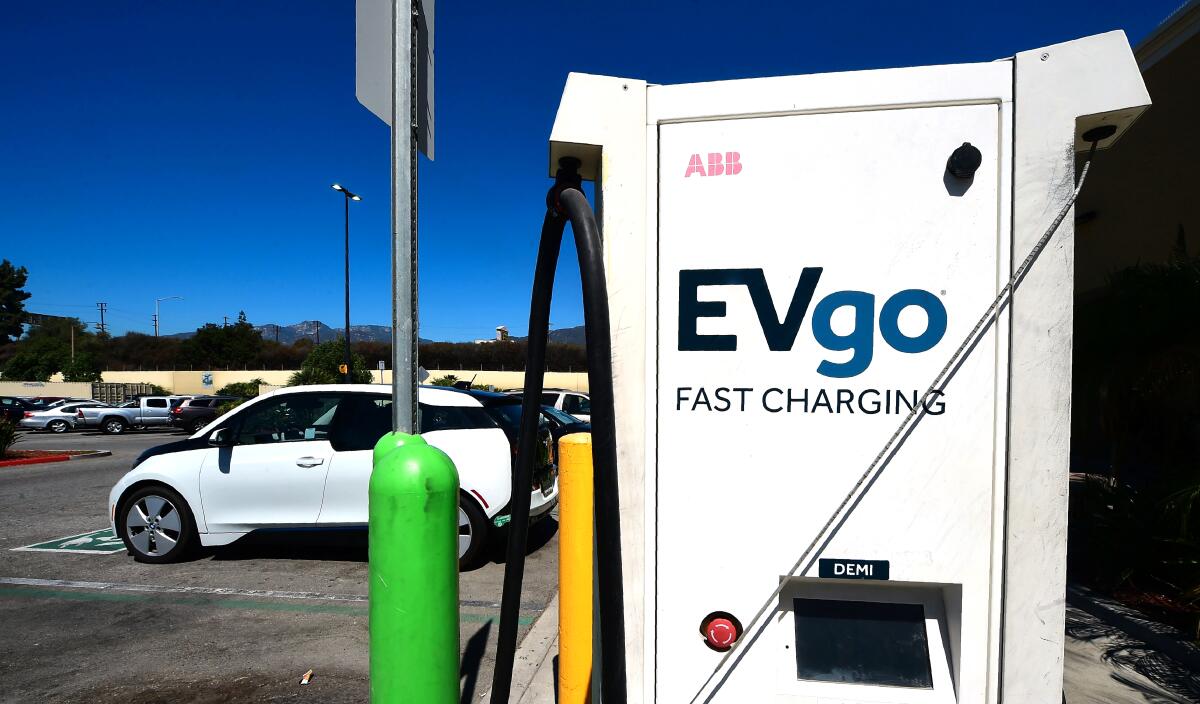
For some time now, whispers have circulated about Walmart’s ambitious venture into the EV charging sector, and after laying low for nearly a year, they are finally prepared to unveil their extensive plans, which could significantly impact electric vehicle drivers across the United States.
Walmart’s EV charging manager shared details of their vision first. It is clear Walmart is taking EV charging very seriously indeed. They plan to use their main strengths for this system. Things like cost and convenience are really important for them. They want to offer unique value to their customers for sure.
Walmart’s ambition is very big; it is quite striking. They will add chargers at thousands of stores by 2030. There are plans for even more expansion next decade also. We do not know how many chargers each store gets. But the design will surely fit local needs very well. The number of chargers depends on the local market condition. This includes how many EVs are nearby and other networks.
This focus on local needs is very important indeed. If an area needs more chargers, Walmart will provide them. Crucially, sites will be designed so they are quite flexible. Walmart will watch how much the chargers get used. Infrastructure can take on more chargers as use increases. This prevents annoying waits at busy charging locations also.

Reliability stands as another important area of focus. They picked Alpitronic and ABB after testing many different suppliers. This ensures a fast and reliable charging experience for everyone. While these are choices now, they are open to other brands. They will consider other high-quality suppliers in the future. Using chargers is easy no matter what the hardware seems like. Drivers just use the Walmart app for starting and paying.
Using the Walmart app is a really convenient way to do it. Customers know the app for shopping and can do charging too. This simplifies things, avoiding the need for lots of different apps. Other networks often make you download more applications for users.
Currently, various charging networks like Electrify America are already positioned at Walmart locations, which raises intriguing questions about the future landscape of EV charging; while Walmart’s partners appear supportive of this initiative, their ongoing expansion will necessitate a reassessment of these partnerships, indicating potential shifts in the charging infrastructure.
To test things, I visited the first official site in Texas. McKinney, Texas, is the first official network site you see. There are two other test sites also in Texas and Arkansas. This site has four Alpitronic chargers that serve eight bays. Each charger has NACS and CCS1 connectors to charge two cars. The 400 kW power splits between two cars as needed. Each cable can give up to 600 amps for fast charging.

However, this situation highlights a crucial aspect of the evolving charging landscape: vehicles that utilize CHAdeMO connectors will find these new stations inaccessible, impacting older models such as certain Nissan LEAFs, illustrating the industry’s gradual transition toward CCS1 and NACS standards, which may leave some EV owners behind.
During the test, I charged a GMC Hummer EV there. The truck successfully pulled more than 300 kW for a bit. Charging from one percent to 53 percent took 27 minutes. It added 100 kWh of electric power to the battery. This session cost 42 dollars, or 42 cents per kWh. This shows these sites can offer really fast charging speeds. You can add a lot of range to your car pretty fast here.
It’s also worth noting that pricing at these charging stations will vary significantly based on location and local electricity costs, with loyal customers potentially enjoying perks like discounts for Walmart Plus members, reflecting Walmart’s ongoing commitment to rewarding its dedicated shoppers for their patronage.
A big challenge is the money needed for each charging spot. One site with ten fast chargers can cost $300k to $500k. This cost is big for small charging companies, for sure. But it is not as big for a huge company like Walmart.

Walmart expects over $700 billion in money next year. Paying for chargers is not a money problem for this company. It is just about their plan and if they really want it. Their money lets them build quickly at thousands of places. Other companies cannot match this speed for sure now.
Putting chargers at stores gives practical benefits too for users. Walmart stores have staff there during most business hours. If a customer needs help, a trained staff is right there. You do not get this kind of help at charging spots without staff.
Having staff on-site at Walmart locations is a strategic move that addresses a major challenge for charging networks—rapidly identifying and repairing faulty chargers, as traditionally, users would rely on mobile apps to report issues, which could lead to delays in fixing problems that affect their charging experience.

By allowing customers to report issues directly to store managers, Walmart facilitates quicker resolutions, as app feedback may take longer to reach staff who are often remote, and store managers, motivated by customer satisfaction, are eager to address complaints promptly to avoid repetition.
With the potential to establish a vast charging network of 2,000 to 3,000 stations by 2030, Walmart is positioning itself to become a significant player in the EV charging market, potentially offering between 25,000 and 30,000 charging spots capable of delivering rapid charges up to 400 kW for all types of electric vehicles.
For comparison, Tesla built its network over 13 years. Tesla has around 2,600 sites with 30,000 charging spots now. Walmart might match Tesla’s numbers within five years easily. They use their land and money to build this network out. They have money and prime spots and want this fast growth now.
This huge build-out affects Walmart’s competitors also. Think about Costco and Target and how they are affected here. They may need to add chargers or lose EV-driving shoppers. They risk losing customers to Walmart because of this change. Convenience is a big draw for customer choice now. Shopping and charging at once makes Walmart look very good indeed. People may pick Walmart over stores lacking charging spots.

For those without home charging options, Walmart’s locations present an ideal solution, allowing drivers to seamlessly charge their vehicles during regular shopping trips, eliminating the need for additional stops, and with competitive pricing, Walmart may even offer more affordable rates compared to existing charging companies, enhancing the value for cost-conscious electric vehicle drivers.
While initial concerns arose following the discontinuation of a government EV charging initiative, Walmart’s commitment to building a nationwide network promises to provide essential infrastructure for all, alongside newer players like Ionna and established networks such as Tesla, Electrify America, and EVgo, ensuring a robust and expanding public fast-charging landscape that enhances options and reduces costs for electric vehicle drivers throughout the United States.
Related posts:
Walmart Opens Up About Its EV Charging Network: Charge Better
Walmart shopper finds mystery $528 charge on bank account – then learns of serious security issue costing customers





